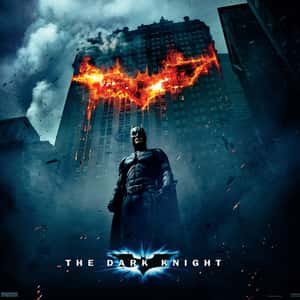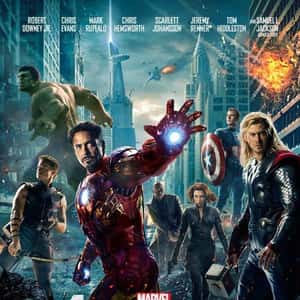
- Photo 1:
- Photo 2:
- flickr
- CC0
- Photo 3:
Long before the MCU turned superhero crossovers into box office certainties, Christopher Nolan's masterpiece proved comic book films could transcend their genre limitations. Heath Ledger's transformation into the Joker redefined what audiences expected from superhero-movie performances (earning him a posthumous Oscar) while elevating everyone around him — particularly Christian Bale's haunted Bruce Wayne and Gary Oldman's weary Jim Gordon. The film's visual grammar, from those sweeping IMAX cityscapes to the truck-flip practical effects, created a template for grounding comic book action in tactile reality. Cinematographer Wally Pfister and composer Hans Zimmer craft a Gotham that feels both operatic and lived-in, whether in the claustrophobic hospital confrontation or the soaring evacuation sequence. The script's exploration of societal themes about surveillance and moral compromise might have seemed heavy-handed in lesser hands, but Nolan's technical precision and the cast's gravitas make The Dark Knight less a superhero movie than a crime epic that happens to feature a guy in a cape — complete with Michael Mann-worthy set pieces and a villain whose chaotic philosophy still sparks debate.
- Released: 2008
- Directed by: Christopher Nolan
The audacious promise of the MCU's interconnected storytelling finally paid off when Avengers: Infinity War turned a decade of character development into emotional rocket fuel. The Russo brothers orchestrated what seemed impossible: juggling 40-plus heroes across multiple storylines while keeping Josh Brolin's Thanos — a CGI villain with dreams of universal genocide — compelling and even sympathetic. Every character moment lands with the weight of their previous appearances, from Thor's vengeful entrance in Wakanda to Spider-Man's gut-wrenching fade to dust. The film's technical achievements match its narrative ambition, with Thanos setting new standards for motion-capture performance and the battle on Titan showcasing how far superhero action sequences had evolved since the first Avengers film. The screenplay's structure breaks conventional wisdom by positioning Thanos as the protagonist, tracking his quest for the Infinity Stones while the heroes react to his moves, culminating in that rare blockbuster ending that left audiences in stunned silence. Marvel's biggest gamble — treating their interconnected films like long-form television — created a payoff that redefined what superhero movies could achieve.
- Released: 2018
- Directed by: Anthony Russo, Joe Russo
The Avengers pulled off what seemed like an impossible feat: combining four separate franchises into a cohesive whole that actually worked. Joss Whedon's script gave each hero their moment to shine while crafting believable friction between larger-than-life personalities — from Tony Stark's quip-heavy egotism to Captain America's old-school idealism. The film's technical achievements matched its character work, with the Battle of New York sequence setting a new standard for large-scale superhero action (watched frame-by-frame, the "circle shot" of all six Avengers fighting together still reveals new details). Mark Ruffalo's debut as Bruce Banner finally cracked the code for the Hulk's big-screen presence, while Tom Hiddleston's Loki provided the perfect mix of menace and charm needed to unite such powerful heroes against a common threat. The film's success — both creative and commercial — validated Marvel's shared universe experiment and created the blueprint for every superhero crossover event that followed, proving these characters could support the weight of their comic book counterparts' most ambitious team-ups.
- Released: 2012
- Directed by: Joss Whedon
Guardians of the Galaxy turned Marvel's riskiest bet — a space opera featuring a talking raccoon and a monosyllabic tree — into proof that the MCU could succeed with virtually any source material. James Gunn's direction infused the cosmic side of Marvel with irreverent humor and genuine heart, while Chris Pratt's Star-Lord led a cast of unknowns (by superhero standards) into instantly iconic status. The film's 70s soundtrack did more than provide nostalgic beats — it created an emotional through-line for Peter Quill's character while revolutionizing how superhero films approached music (that opening dance number to "Come and Get Your Love" set the tone perfectly). The visual effects team crafted alien worlds that felt both fresh and lived-in, from the mining colony Knowhere to the pristine streets of Xandar, while bringing characters like Rocket and Groot to photoreal life. The film's greatest triumph was making its oddball family dynamic feel more authentic than many earthbound superhero teams, proving the MCU could extend its reach far beyond traditional comic book adaptations without losing its emotional core.
- Released: 2014
- Directed by: James Gunn
Captain America: The Winter Soldier transformed Marvel's most straight-laced hero into the centerpiece of a 1970s-style political thriller that changed the MCU's trajectory. The Russo brothers brought a grounded visual style that made every punch land with bruising impact — particularly in the knife fight between Cap and the Winter Soldier, which ranks among the MCU's most visceral combat sequences. Chris Evans and Scarlett Johansson's chemistry anchored the film's paranoid atmosphere, while Robert Redford's presence as Alexander Pierce added gravitas to the film's examination of security versus freedom. The decision to dismantle SHIELD resonated beyond the typical superhero stakes, forcing the entire MCU to grapple with questions of institutional trust and personal loyalty. The film's technical prowess showed in its practical effects and stunt work (the elevator fight scene became instantly iconic), while the revelation of Hydra's infiltration paid off plot threads dating back to The First Avenger. By treating its superhero framework with the seriousness of a Cold War espionage film, Winter Soldier demonstrated how the genre could tackle complex political themes without sacrificing spectacle.
- Released: 2014
- Directed by: Anthony Russo, Joe Russo
Logan stripped the superhero genre down to its raw nerves, turning Wolverine's swan song into a neo-western that proved comic book films could reach the dramatic heights of any prestige picture. James Mangold's R-rated approach allowed Hugh Jackman to finally portray the character's brutality in full force, while revealing the vulnerable humanity beneath the adamantium claws. The film's muted palette and practical effects grounded its violence in painful reality, with cinematographer John Mathieson capturing both intimate character moments and visceral action sequences with equal precision. Dafne Keen's X-23 matched Jackman's intensity beat for beat, while Patrick Stewart's portrayal of Professor X's deteriorating mind brought heartbreaking depth to a character typically defined by his mental prowess. The film's quiet moments carry as much weight as its action scenes — a shared dinner with a farming family means as much as any fight sequence. By focusing on mortality, family, and redemption rather than world-ending threats, Logan elevated the superhero genre while serving as a fitting farewell to one of its defining performances.
- Released: 2017
- Directed by: James Mangold







